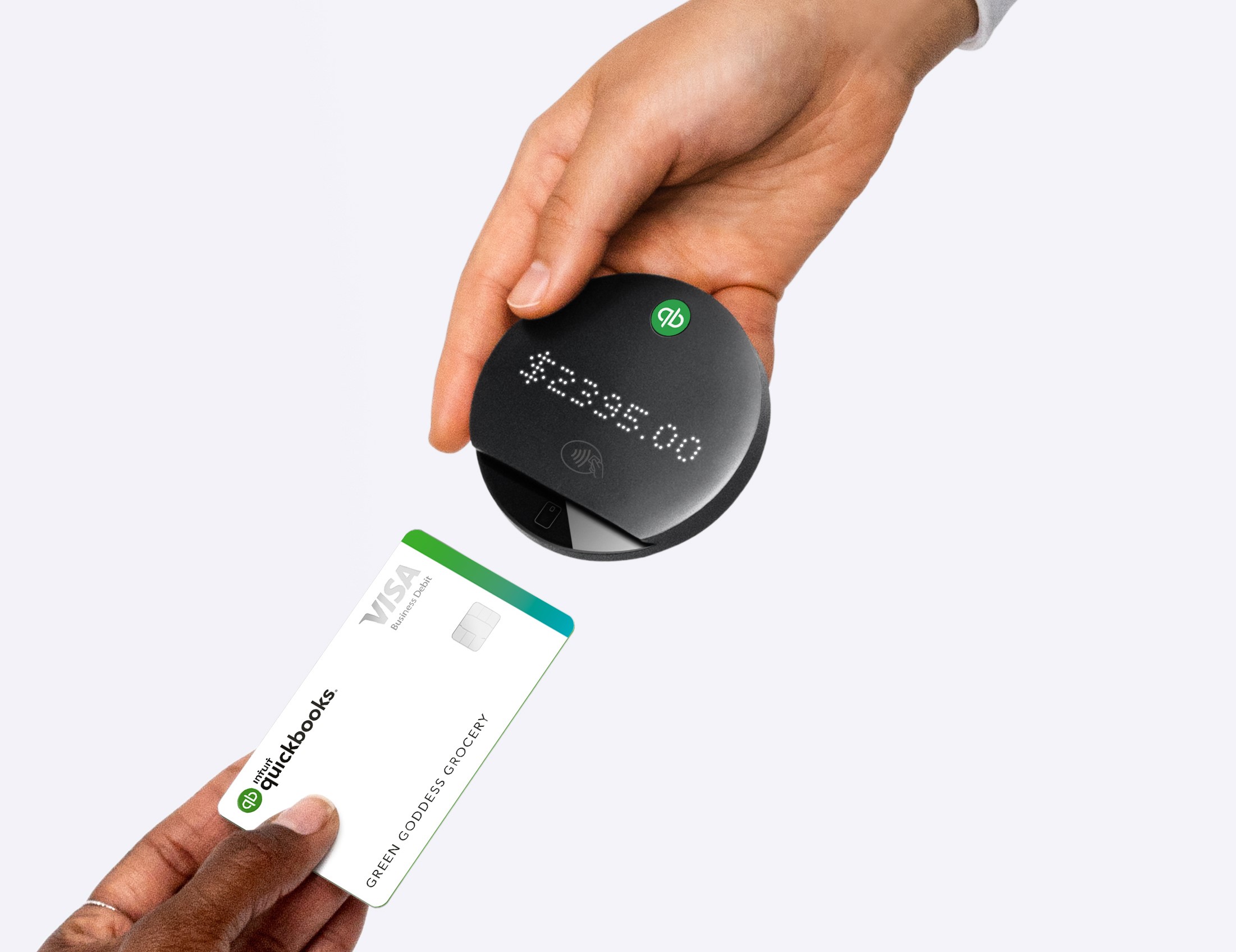

Finance
How To Make Money With Credit
Modified: March 6, 2024
Learn how to make money with credit and grow your finances. Discover tips, strategies, and opportunities to maximize your earning potential in the finance industry.
(Many of the links in this article redirect to a specific reviewed product. Your purchase of these products through affiliate links helps to generate commission for LiveWell, at no extra cost. Learn more)
Table of Contents
Introduction
When it comes to personal finance, credit can play a significant role in your financial journey. While many people view credit as a means to borrow money or make purchases, did you know that you can also make money with credit? Yes, you read that right!
In this article, we will explore various strategies and opportunities to leverage your credit to earn some extra cash. Whether you are looking to maximize credit card rewards or take advantage of promotional offers, there are numerous ways to benefit financially from your credit.
Before we dive into the different methods, it is essential to understand the concept of credit and how it impacts your financial life. Credit is a numerical representation of your borrowing history, including your ability to repay loans and manage your debts responsibly. Lenders and financial institutions use this information to assess your creditworthiness and determine the terms and conditions of any loans or credit accounts you apply for.
Building a good credit score is crucial as it opens up opportunities for better financial products, such as lower interest rates on loans and credit cards. Additionally, a strong credit history can make you eligible for various money-making opportunities that we will discuss in this article.
Now that we have a basic understanding of credit, let’s explore the different ways you can make money with it. Whether you are a credit card enthusiast or someone looking to take advantage of promotional offers, there is something for everyone. So, let’s dive in and discover how to maximize your credit and boost your bank account!
Understanding Credit
Before we delve into the various ways to make money with credit, it’s essential to have a solid understanding of what credit is and how it works.
In simple terms, credit refers to the ability to borrow money or obtain goods and services with the agreement to repay the borrowed amount in the future, usually with interest. When you apply for a loan, credit card, or any form of credit, lenders assess your creditworthiness, which is determined by several factors, including your credit score, credit history, and income.
Your credit score plays a crucial role in the lending decision-making process. It is a three-digit number ranging from 300 to 850, with a higher score indicating a more favorable credit risk. Factors such as payment history, credit utilization ratio, length of credit history, types of credit used, and recent credit inquiries all contribute to your credit score.
A good credit score not only helps you qualify for better loan terms and credit cards but also opens up opportunities for making money with credit. Lenders are more likely to offer favorable interest rates and perks to individuals with a strong credit history.
Furthermore, having good credit allows you to take advantage of various credit card rewards programs, promotional offers, and other money-making opportunities discussed in this article. It’s crucial to maintain a positive credit history by paying your bills on time, keeping your credit utilization low, and avoiding excessive debt.
Understanding the nuances of credit is essential for maximizing its potential to make money. By managing your credit responsibly and maintaining a good credit score, you can unlock a world of financial benefits and opportunities.
Building a Good Credit Score
Building a good credit score is a crucial step in maximizing the financial opportunities that come with credit. Here are some strategies to help you establish and maintain a strong credit history:
- Pay your bills on time: Payment history is one of the most critical factors in determining your credit score. Make sure to pay all your bills, including credit card bills, loans, and utilities, by the due date.
- Manage your credit utilization: Credit utilization refers to the percentage of your available credit that you are currently using. It is recommended to keep your credit utilization ratio below 30% to maintain a good credit score. For example, if you have a credit card with a $1,000 limit, try to keep your outstanding balance below $300.
- Keep old credit accounts open: Length of credit history is another factor that impacts your credit score. Even if you don’t use a credit card or have paid off a loan, it’s generally beneficial to keep those accounts open unless there are specific reasons to close them.
- Diversify your credit: Having a mix of different types of credit, such as credit cards, loans, and a mortgage, can positively impact your credit score. However, avoid taking on excessive debt just to diversify your credit portfolio.
- Regularly check your credit report: Monitor your credit report for any errors or fraudulent activity. You are entitled to a free credit report from each of the major credit bureaus once a year. Check for inaccuracies and dispute any errors promptly.
- Limit new credit applications: Opening multiple credit accounts within a short period can negatively impact your credit score. Limit new credit applications unless necessary and avoid unnecessary inquiries into your credit report.
By following these strategies, you can improve and maintain a good credit score, which will open doors to various financial benefits. A strong credit score not only helps you qualify for better loan terms and lower interest rates but also makes you eligible for the money-making opportunities we will explore next.
Different Ways to Make Money with Credit
Now that we have a solid grasp of credit and the importance of building a good credit score, let’s explore several ways to make money with credit:
- Cash Back Rewards: Many credit cards offer cash back rewards on purchases. By using these credit cards for your everyday expenses, you can earn a percentage of your spending back in cash. Take advantage of cards that offer higher cash back rates in categories that align with your spending habits.
- Credit Card Sign-up Bonuses: Credit card companies often provide sign-up bonuses to entice new customers. These bonuses can range from cash rewards to airline miles or hotel points. By strategically applying for credit cards with lucrative sign-up bonuses, you can earn substantial rewards.
- Travel Rewards: If you enjoy traveling, credit cards that offer travel rewards can be a great way to make money. Accumulate airline miles or hotel points through your credit card spending and redeem them for flights, hotel stays, or other travel-related expenses.
- Balance Transfer Offers: Some credit card companies offer promotional balance transfer offers with low or 0% interest rates for a certain period. By transferring high-interest balances from one card to another, you can save money on interest payments and potentially pay off your debt faster.
- Credit Card Churning: Credit card churning involves strategically opening and closing credit card accounts to take advantage of sign-up bonuses and rewards. By carefully managing your credit and adhering to the terms and conditions of credit card issuers, you can maximize the rewards and benefits.
- Credit Card Affiliate Programs: If you have a platform, such as a blog or website, you can sign up for credit card affiliate programs. By promoting credit cards and referring new customers, you can earn commissions or bonuses for successful sign-ups.
- Taking Advantage of 0% APR Promotions: Some credit cards offer 0% APR promotions on purchases or balance transfers for an introductory period. By leveraging these promotions, you can make interest-free purchases or pay off existing debt without incurring interest charges.
These are just a few examples of how you can leverage your credit to make money. Each strategy requires careful consideration and responsible credit management to ensure you maximize the benefits while avoiding excessive debt.
Remember to thoroughly research and understand the terms and conditions of any credit card or promotional offer before applying. With smart credit card usage and strategic planning, you can turn your credit into a tool for financial gain.
Cash Back Rewards
Cash back rewards are a popular way to make money with credit cards. Many credit card issuers offer cash back programs that allow cardholders to earn a percentage of their purchases as cash rewards. This can range from 1% to 5% or more, depending on the credit card and the spending category.
To maximize cash back rewards, start by choosing a credit card that aligns with your spending habits. Some cards offer higher cash back rates for specific categories like groceries, gas, dining, or online shopping. By using these cards for your everyday expenses, you can earn a significant amount of cash back over time.
It’s important to note that different credit cards have varying redemption methods for cash back rewards. Some cards allow you to redeem cash back as a statement credit, reducing your outstanding balance. Others offer options to deposit the cash back into your bank account or redeem it for gift cards or merchandise.
To make the most of cash back rewards, consider the following tips:
- Pay your balance in full: To truly make money with cash back rewards, it’s crucial to pay your credit card balance in full each month. Carrying a balance and incurring interest charges will negate the benefits of the cash back rewards.
- Take advantage of bonus categories: Many credit cards offer rotating bonus categories that provide a higher cash back rate for a limited time. Stay informed about these categories and plan your spending accordingly to earn more cash back.
- Stack your rewards: Look for opportunities to stack your cash back rewards with other discounts or deals. For example, you can use a cash back credit card for purchases made through a cash back portal or combine the rewards with coupons or promotional codes.
- Consider multiple cards: Depending on your spending patterns, it may be beneficial to have multiple cash back credit cards. By using different cards for different categories, you can optimize your cash back earnings.
- Monitor and review your rewards: Stay on top of your cash back rewards and review them regularly to ensure accuracy. Keep track of any expiration dates or changes in the terms and conditions of the rewards program.
By utilizing cash back rewards effectively, you can earn money with your credit card simply by making everyday purchases. It’s important to note that responsible credit card usage is key to reap the benefits of cash back rewards without falling into debt. Paying off your balance in full and using credit wisely will allow you to enjoy the monetary advantages of cash back rewards.
Credit Card Sign-up Bonuses
Credit card sign-up bonuses are a lucrative way to make money with credit cards. Many credit card issuers offer generous incentives to attract new customers. These sign-up bonuses can come in various forms, such as cash rewards, airline miles, hotel points, or statement credits.
To take advantage of credit card sign-up bonuses, you need to meet the issuer’s requirements, which usually involve spending a certain amount within a specified time frame after opening the account. For example, a credit card may offer a sign-up bonus of $500 if you spend $3,000 within the first three months.
Here are some tips to maximize credit card sign-up bonuses:
- Research and compare offers: Before applying for a credit card based solely on the sign-up bonus, take the time to research and compare multiple offers. Consider factors such as the spending requirement, annual fee, and ongoing benefits of the credit card.
- Create a plan: To meet the spending requirement and earn the sign-up bonus, create a plan to use the credit card strategically for your regular expenses. However, be mindful of overspending or making unnecessary purchases just to reach the threshold.
- Timing matters: Keep an eye out for special promotions or increased sign-up bonuses that credit card issuers may offer periodically. By timing your application strategically, you can take advantage of the best available offer.
- Track your progress: Keep track of your spending to ensure you meet the required threshold for the sign-up bonus. Monitor your transactions and check with the credit card issuer if needed to ensure you’re on track.
- Consider the value of the rewards: Evaluate the redemption options for the sign-up bonus rewards. Cash rewards provide immediate value, while airline miles or hotel points can be used for future travel. Calculate which option will provide the most value for your needs.
- Be mindful of annual fees: Some credit cards with attractive sign-up bonuses may come with annual fees. Consider whether the value of the sign-up bonus and ongoing rewards justifies the cost of the annual fee.
When utilizing sign-up bonuses, it’s important to manage your credit responsibly. Avoid opening multiple credit card accounts solely for the sign-up bonuses, as this can negatively impact your credit score and increase your risk of overspending. Choose credit cards that align with your financial goals and spending patterns to optimize your rewards and make the most of credit card sign-up bonuses.
Travel Rewards
If you are a frequent traveler or have a desire to explore new destinations, leveraging travel rewards can be an excellent way to make money with credit cards. Many credit card issuers offer travel rewards programs that allow you to earn airline miles, hotel points, or other travel-related benefits.
By using travel rewards credit cards for your everyday spending, you can accumulate points or miles that can be redeemed for flights, hotel stays, car rentals, and other travel expenses. Here’s how you can maximize your travel rewards:
- Choose the right travel rewards credit card: Research and compare different travel rewards credit cards to find one that aligns with your travel preferences. Look for cards that offer flexible redemption options, partnerships with airlines or hotel chains you frequently use, and valuable travel perks.
- Consider sign-up bonuses: Just like cash back cards, travel rewards credit cards often come with sign-up bonuses. Take advantage of these bonuses by meeting the spending requirements within the specified time frame.
- Focus your spending on bonus categories: Many travel rewards credit cards offer bonus categories that provide higher rewards for specific types of spending, such as travel, dining, or gas. Use your card strategically to maximize your rewards in these categories.
- Combine rewards programs: If you have multiple travel rewards credit cards or loyalty programs, consider combining your rewards to enhance their value. Some programs allow you to transfer points or miles between accounts, giving you more flexibility in redeeming rewards.
- Look for travel partnerships and perks: Some travel rewards credit cards have partnerships with airlines, hotels, or other travel providers, offering additional benefits such as discounted rates, complimentary upgrades, or access to airport lounges. Take advantage of these perks to enhance your travel experience.
- Be flexible with your travel plans: Flexibility in travel dates and destinations can help you get the most value out of your travel rewards. Keep an eye out for award seat availability or hotel availability during off-peak times, as these can provide better redemption options.
- Utilize travel portals and booking platforms: Some travel rewards programs have their own online portals or partnerships with booking platforms. Booking travel through these channels can provide additional rewards or discounts, making your travel rewards go even further.
Travel rewards credit cards can make your dream trips more affordable and enjoyable. However, it’s important to weigh the benefits against any associated fees, such as annual fees or foreign transaction fees. Additionally, responsible credit card usage and paying off your balance in full each month are crucial to avoid interest charges and maximize the value of your travel rewards.
By leveraging travel rewards and being strategic with your credit card usage, you can turn your everyday spending into memorable travel experiences.
Balance Transfer Offers
If you have high-interest credit card debt, taking advantage of balance transfer offers can help you save money and potentially pay off your debt faster. Many credit card issuers offer promotional balance transfer offers with low or 0% interest rates for a specific period, typically ranging from 6 to 18 months.
By transferring your existing high-interest balances to a credit card with a promotional offer, you can consolidate your debt and reduce the amount of interest you’ll need to pay. Here’s how you can make the most of balance transfer offers:
- Compare balance transfer offers: Research and compare different credit card offers to find one with the most favorable terms and low or 0% introductory interest rates. Take note of any balance transfer fees, as they can impact the overall savings.
- Understand the terms and duration: Pay close attention to the duration of the promotional offer. Make sure it provides enough time for you to pay off your debt without incurring high interest charges once the promotional period ends.
- Calculate your savings: Determine how much you can save by transferring your balance. Use online calculators or consult with a financial advisor to get an estimate of the potential interest savings and the timeframe required to pay off your debt.
- Develop a repayment plan: Take advantage of the low or 0% interest rate period to aggressively pay down your debt. Create a realistic budget and allocate extra funds towards paying off the balance before the promotional period ends.
- Avoid new purchases: While you may have a credit line available on your balance transfer credit card, it’s important to avoid making new purchases during the promotional period. Focus solely on paying off the transferred balance to maximize your savings.
- Monitor your progress: Regularly track your repayment progress to ensure you stay on track and fully pay off your debt before the promotional period ends. Keep an eye on your monthly statements and strive to meet or exceed your payment goals.
- Consider the after-promotion interest rate: If you still have an outstanding balance once the promotional period ends, be aware of the interest rate that will be applied to the remaining balance. Consider transferring any remaining balance to another promotional offer or explore other options if necessary.
Balance transfer offers can be a valuable tool in managing and paying off credit card debt more efficiently. However, it’s important to read and understand the terms and conditions of the offer before proceeding. Maintain responsible credit card usage habits and avoid accumulating new debt to fully reap the benefits of a balance transfer offer.
By taking advantage of balance transfer offers strategically, you can save money on interest payments and make progress towards becoming debt-free.
Credit Card Churning
Credit card churning is a strategy where individuals open and close credit card accounts strategically to take advantage of sign-up bonuses, rewards, and other credit card benefits. While it may sound like a complex and risky practice, when done responsibly, credit card churning can be a lucrative way to make money with credit cards.
Here are some essential aspects to consider when engaging in credit card churning:
- Research and plan: Before diving into credit card churning, take the time to research different credit card offers and understand the terms and conditions, including spending requirements and timelines for earning sign-up bonuses.
- Timing is crucial: Timing is essential when it comes to credit card churning. Applying for multiple credit cards within a short period may negatively impact your credit score due to the hard inquiries from the card issuers. Space out your applications strategically to minimize the impact on your credit.
- Manage your credit responsibly: Responsible credit management is crucial for successful credit card churning. Pay your bills on time, keep your credit utilization low, and avoid carrying high balances to maintain a healthy credit score and eligibility for future credit card offers.
- Understand the rules: Each credit card issuer has specific rules and limitations on sign-up bonuses. Be aware of limitations on how often you can receive a sign-up bonus, such as restrictions on previous cardholder status or timeframes between previous card closures and new applications.
- Track your accounts: With multiple credit cards in rotation, it’s important to keep track of various accounts, payment due dates, and spending requirements. Stay organized and use tools like spreadsheets or financial management apps to monitor your progress and meet your goals.
- Manage annual fees: Some credit cards may have annual fees, which can eat into your overall earnings. Consider whether the benefits outweigh the fees and be prepared to cancel or downgrade cards if necessary to avoid unnecessary costs.
- Maximize rewards redemption: Optimize the redemption of rewards by utilizing them for high-value options, such as travel or cash back. Research transfer partners, redemption rates, and opportunities to combine rewards from different cards to get the most value.
While credit card churning can be financially rewarding, it’s important to approach this strategy with caution and responsibility. Be mindful of the impact on your credit score and always prioritize your financial well-being. Implementing smart credit management practices and staying informed about the terms and limitations of each credit card offer will help you make the most of credit card churning.
Remember, credit card churning is not for everyone. It requires discipline, organization, and thorough research to effectively navigate the credit card landscape and optimize the benefits without falling into unnecessary debt or hurting your creditworthiness. Proceed with caution and evaluate whether credit card churning aligns with your financial goals and risk tolerance.
Credit Card Affiliate Programs
Credit card affiliate programs provide an opportunity to earn money by promoting credit cards and referring new customers to credit card issuers. If you have a platform, such as a blog, website, or social media presence, you can enroll in credit card affiliate programs and earn commissions or bonuses for successful sign-ups.
Here’s how you can make the most of credit card affiliate programs:
- Choose reputable credit card affiliate programs: Research and select credit card affiliate programs that are reputable and offer fair commissions or bonuses. Look for programs that align with your niche or target audience, as this increases the likelihood of successful referrals.
- Create informative and engaging content: Produce high-quality content that educates and informs your audience about credit cards, their benefits, and potential rewards. Use a persuasive tone to highlight the advantages of specific credit cards and why your audience should consider them.
- Disclose your affiliate relationship: It is crucial to disclose your affiliate relationship to maintain transparency and build trust with your audience. Clearly state that you may receive a commission or compensation if users apply and are approved for credit cards through your referral links.
- Place referral links strategically: Incorporate referral links within your content in a natural and non-intrusive way. For example, you can include them within product reviews, comparison articles, or relevant blog posts. Consider using clear and compelling call-to-action phrases to encourage your audience to take action.
- Promote credit cards responsibly: While promoting credit cards, it is essential to emphasize responsible credit card usage and caution against accruing unnecessary debt. Provide information on smart credit management practices, such as paying bills on time and using credit cards for planned expenses.
- Track and monitor your referrals: Regularly review your affiliate dashboard or reports to track your referrals and commissions. This will help you measure the effectiveness of your promotional efforts and identify areas for improvement.
- Stay up to date: Keep yourself informed about changes in credit card offers, rewards, and terms to provide accurate and timely information to your audience. Additionally, stay updated on any changes or updates to the credit card affiliate program you are enrolled in.
Remember, building a successful credit card affiliate marketing strategy requires time, effort, and a genuine desire to help your audience make informed financial decisions. Focus on providing value, trustworthy information, and engaging content to foster a loyal and engaged audience that finds your credit card recommendations valuable.
It’s important to note that compliance with any legal regulations, such as disclosing your affiliate relationship, is crucial to maintain ethical standards and strengthen your relationship with your audience. Always prioritize transparency and disclose your affiliate links and relationships according to the applicable regulations.
By effectively leveraging credit card affiliate programs, you can monetize your platform and earn money by introducing your audience to credit cards that align with their needs and financial goals.
Taking Advantage of 0% APR Promotions
Many credit card issuers offer 0% APR (Annual Percentage Rate) promotions for a specified period, allowing cardholders to make purchases or transfer balances without incurring any interest charges. Taking advantage of these promotions can be a smart way to save money and make the most of your credit card.
Here are some key considerations for maximizing 0% APR promotions:
- Understand the promotion terms: Read and understand the terms and conditions of the 0% APR promotion. Know the duration of the promotional period and any specific requirements, such as minimum payments or restrictions on qualifying purchases.
- Budget and plan your purchases: Use the 0% APR promotion to make planned purchases that you can comfortably pay off within the promotional period. Avoid the temptation to overspend or make impulse purchases that may lead to unnecessary debt.
- Consolidate high-interest debt: If you have existing credit card debt with high-interest rates, consider transferring it to a card offering a 0% APR balance transfer promotion. This allows you to pay off your debt without accruing additional interest charges during the promotional period.
- Pay attention to balance transfer fees: Some balance transfer promotions may come with a fee, typically a percentage of the amount transferred. Evaluate whether the fee is offset by the interest savings you’ll gain during the promotional period.
- Make timely payments: Even though you won’t be charged interest during the promotional period, it’s crucial to make timely payments to maintain a good credit history. Late payments can result in penalties and potentially void the promotional APR.
- Pay off the balance before the promotion ends: To truly benefit from the 0% APR promotion, aim to pay off the balance in full before the promotional period expires. This prevents you from incurring high-interest charges once the regular APR kicks in.
- Be mindful of post-promotion interest rates: If you still have an outstanding balance once the 0% APR promotion ends, familiarize yourself with the regular interest rate that will apply. It’s important to assess whether the regular APR is manageable and fits within your financial plans.
- Avoid new purchases during the promotion: To maximize the benefits of the 0% APR promotion, refrain from making new purchases unless necessary. Focus on paying off your existing balance to avoid accumulating additional debt.
By strategically using 0% APR promotions, you can save money on interest charges and manage your debt more effectively. However, responsible credit card usage and timely payment remain crucial to ensure you stay on top of your financial obligations and maintain a healthy credit history.
It’s important to note that these promotional offers usually have a limited duration and may vary between credit card issuers. Stay informed about any changes or updates to the promotion terms and take advantage of the opportunity to make interest-free purchases or pay off existing debt without incurring high-interest charges.
Remember, while the 0% APR promotion can be a valuable tool, it’s essential to use it wisely and within your financial means. Proper budgeting, realistic repayment plans, and disciplined financial habits will help you make the most of these promotions and avoid unnecessary debt in the long run.
Conclusion
Credit cards are not just a means of borrowing money or making purchases; they can also be powerful financial tools that enable you to make money. The various strategies and opportunities discussed in this article demonstrate the potential for leveraging credit to enhance your financial well-being.
From cash back rewards and credit card sign-up bonuses to travel rewards and balance transfer offers, credit cards offer a host of money-making opportunities. By understanding credit, building a good credit score, and utilizing these strategies responsibly, you can unlock the full potential of your credit cards.
It’s important to approach these money-making avenues with caution and a thorough understanding of the associated terms and conditions. Responsible credit usage is paramount to avoid falling into unnecessary debt or damaging your creditworthiness.
Whether you’re maximizing cash back rewards on everyday purchases, taking advantage of 0% APR promotions, or engaging in credit card churning, always prioritize your financial well-being and maintain a disciplined approach to credit card usage.
Remember, each individual’s financial situation and risk tolerance may vary, so it’s crucial to evaluate these opportunities in the context of your personal goals and circumstances.
By combining financial knowledge, responsible credit management, and a strategic mindset, you can transform your credit cards from mere payment tools into effective money-making assets. So, take control of your credit, explore the possibilities, and use your cards to their fullest potential.














